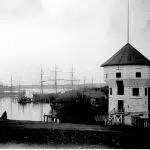
‘We need to protect them:’ City pushes to improve Nanaimo’s tree canopy
NANAIMO — While more people seem to be following local tree removal rules, the City says keeping Nanaimo green amid constant development is an ongoing grind.
Patrick McIntosh, the City’s urban forestry coordinator, said the need to protect Nanaimo’s invaluable inventory of trees has been stressed by years of steady development all over Nanaimo.
He said trees improve air quality and health outcomes, lower heating and cooling costs, and provides wildlife habitat among a laundry list of environmental benefits.
“It is really important that there are urban forest advocates and people understand the need to protect trees both on private and public property,” McIntosh told NanaimoNewsNOW.



